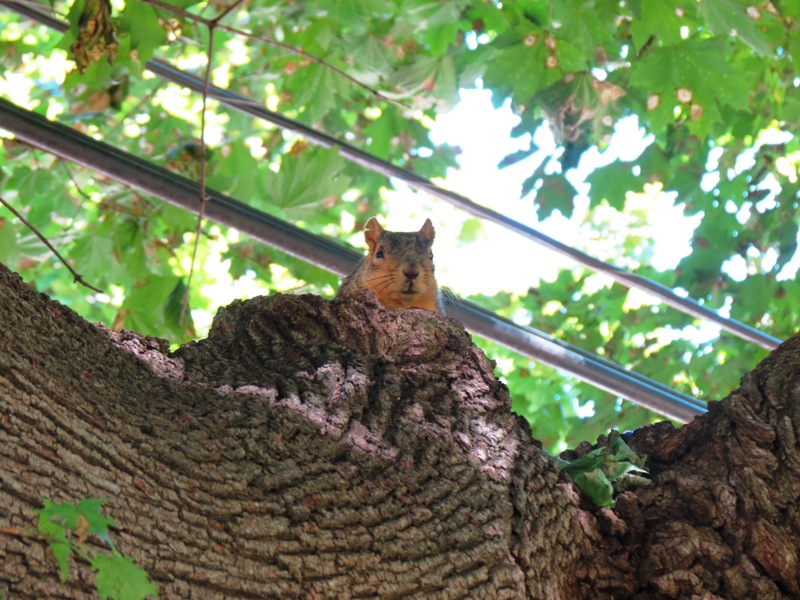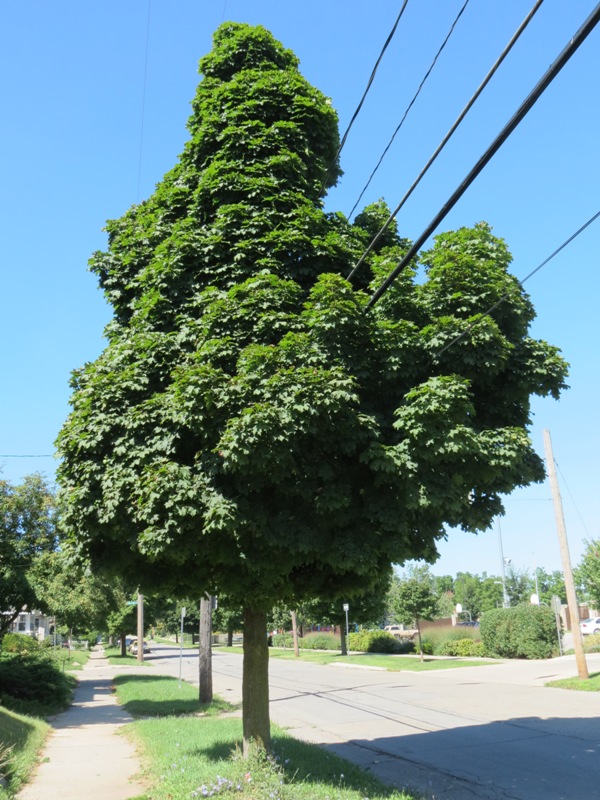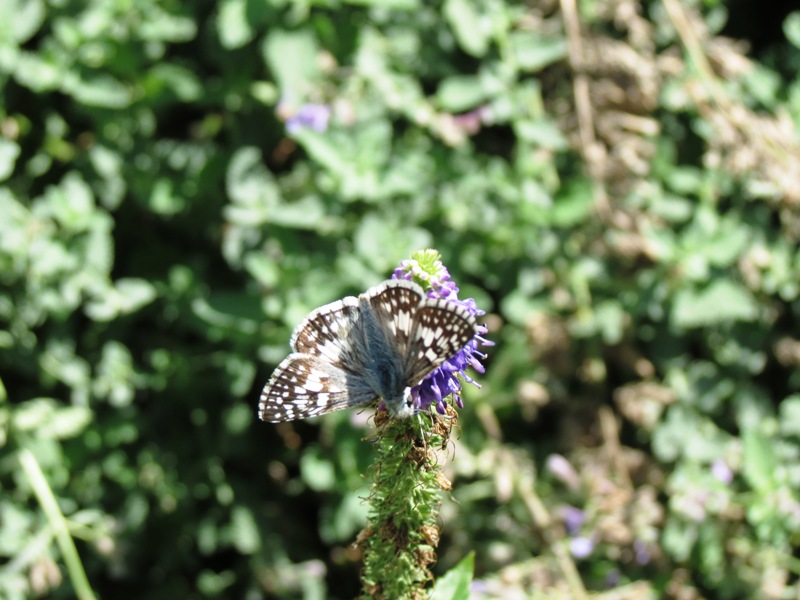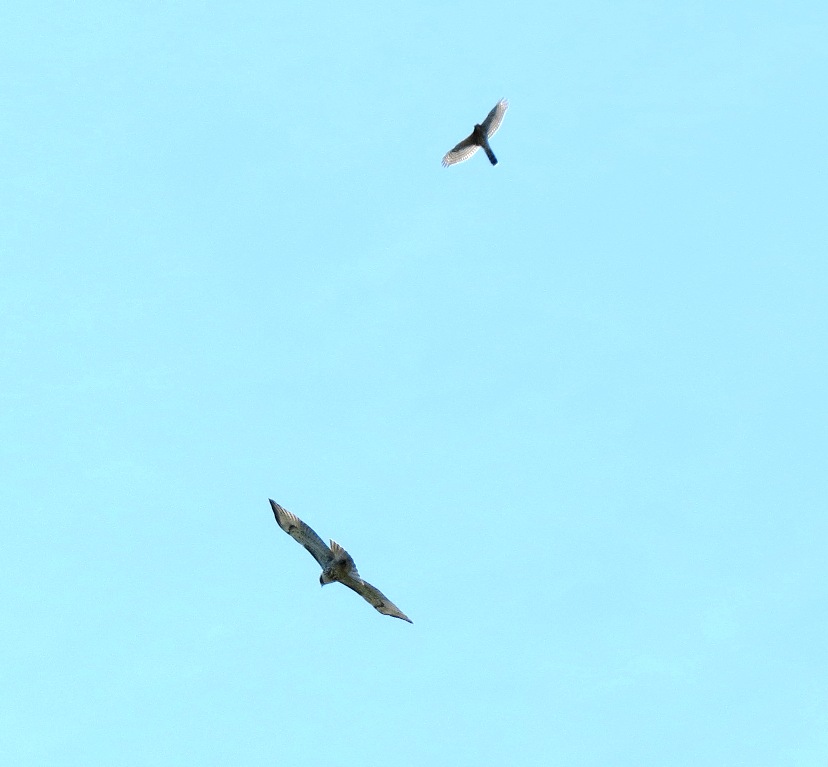When a Country Mouse heads to the city to visit family, he tries to act metropolitan. He obeys traffic laws and all the usual. And yet he can’t help searching out reminders of home. Where’s Nature to be found in all this concrete? The answer, of course, is everywhere and nowhere.
Insofar as Nature is What Is, no place gets blessed with more of her than another. Then again, she is somehow easier to see or praise or interpret when she doesn’t bear too heavy a thumbprint of civilization.
How many pollinators can you find below? Nine species of bee, fly, and caterpillar were browsing this one bunch of sedum.

This sedum is packed with pollinators even though not all are immediately visible!
If you don’t mind a dash of humanity in your cup of Nature, a morning walk to the bakery down city streets can seem full of wilderness.
- An orb-weaver in the crook of a stop sign repairs its web.
- Up under the eaves of an eye-catching Italianate house, a cardinal tends to a second brood of fledglings.
- Back-alley weeds, those hardy colonists, break up pavement with the silent jackhammers of a million skinny roots.
- A half-dozen fox squirrels in one black walnut tree, all gnawing contentedly, harmonize the electric drone of cicadas.

A fox squirrel surveys his enormous maple kingdom.
I can hear the groans. Spiders, squirrels, weeds: you call that wilderness?
And yet the strangeness of a cityscape—at least to a woods-dwelling interloper—is not the lack of natural forms but the bewildering variety. The law of this jungle is: anything goes.
Anything that can be planted in a garden is planted, African daisies, Russian olives, European wild ginger, side by side, without rhyme or reason. Every yard is a new biome, a new type of habitat, a colossal mash-up of all the world’s genres.
In a relatively uninhabited piece of woodland, a beech and hemlock hillside may slowly slip into a red maple swamp or rise gradually into an area of shadowy spruces, but rarely are there such sharp divisions in plant-life as can be found in the city.

Around power-lines, the modern art of abstract topiary at its finest.
Citified wilderness has another striking feature: the undeniable magnificence of the trees. Any old neighborhood has a couple dozen giants that make their scrawny, scraggly cousins of the forest look like saplings.
Huge, healthy, spreading shade trees are not a dime a dozen in the woods, where stiff competition stunts, contorts, and blasts the majority of seedlings. In fact, if you find a giant there—like many of the enormous white pines towering up in New England’s young woods—it’s often a “wolf tree” that started its life in an earlier era, when the land was pasture and a lone tree along the fenceline could grow without check.
With no canopy to fight through, no other trees to outcompete for moisture and sunlight, what could there be to stop you from stretching up and out in all directions? In the city, however, nearly every tree has this easy life.
Take a look on your next walk—in the city, the very health of Nature is unnatural.

A common checkered-skipper (Pyrgus communis), one of the many butterflies that thrive in cultivated urban gardens.
On the way home from the bakery, a flash of movement between two houses turns into a red-tailed hawk, slowly rising in circles to soar above a city park. It calls twice, a harsh, staticky scraaaawch, and the reason soon becomes apparent: a smaller, more agile Cooper’s hawk, long white-tipped tail dragging behind it, comes corkscrewing down on the larger bird, like a terrier nipping at the heels of a mastiff.
The red-tail has long been at home in suburban or urban settings, but the Cooper’s, traditionally a secretive, stealthy bird-hunter of the forests, has only in the past two decades adapted itself amazingly to life in the city, where pigeons, starlings, and house sparrows make easy pickings for such an agile predator.
What does this maze of streets, houses, and mismatched towering trees look like from above? Is it any stranger a labyrinth than the old dark forests this city has replaced?

Red-tailed and Cooper’s Hawks. Photographs by Henry Walters.
If a bird can find its way around town, after so many thousands of uncivilized generations, and find civilization to its liking, why shouldn’t a country mouse feel the same?














